Monrovia, and Liberia in general, is not an obvious choice when it comes to tourist destinations. But it doesn’t matter, since one of the things I like to do is finding my own interesting places and linking them, with similar places I know, with history, or with a simple story.
Liberia has a lot to tell about the management of a country by a minority, about the misuse of precious natural resources, about a shortly successful African economy, about a cultural mix not really mixed, about its recent civil war, etc.
One of the interesting, relatively easy journey to do in Liberia, is to visit formerly famous sights or re-visit history.
On the sad side, we can have a look at the Pullitzer Prize winning photos from Larry C. Price on the atrocities of the Samuel Doe coup in 1980. The set features the public execution on the beach of former government high-ranking officials. On the second photo, we can figure out the location of the wooden pillars by identifying the Executive Mansion on Capitol Hill. I was at the exact same spot. A couple of young Liberians were making out on the beach.
On a more “neutral” side, Monrovia had two of the best hotels of Africa before the coup. The Ducor Palace Hotel and the Hotel Africa are nowadays no more than ruins of five-star hotels. They were among the first five-star hotels in Africa.

The Ducor hotel cannot be missed, on the top of its hill in the center of downtown Monrovia. As an Intercontinental hotel, it was built in 1959 and must have been an icon of international posture and luxury in the old times.
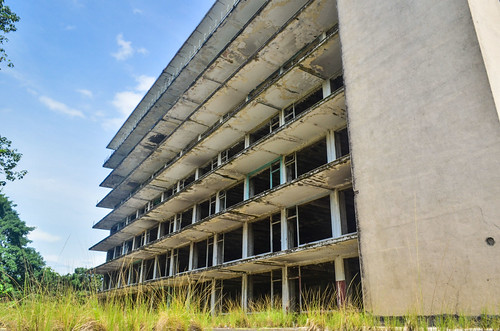
The road leading to the entrance is bordered with very old houses or slums. There are kids playing football in front of the hotel. A security guard is, more or less, working at the bottom. He is here to protect the building against vandalism and robbery, although the only things left to be stolen are the rusty frames of the doors and windows. As I am wandering around with a bag looking like a camera bag, he warns me that no pictures are allowed. He says I can walk around as long as I don’t take pictures and don’t climb up the stairs.

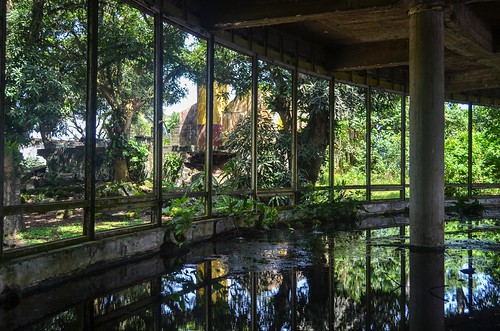
Well, taking pictures is one of the main reasons of my presence here, and I certainly intend to climb the stairs. He says it is forbidden because he was recently instructed to do so. He shows me the business card of someone from the construction company Aecom, saying that people from Middle East will invest into the hotel and renovate it as soon as the current troubles are solved. Since 2008, the building is apparently leased to or owned by Kaddafi or the Libyan government and the transfer to the new tenant is not completed yet.
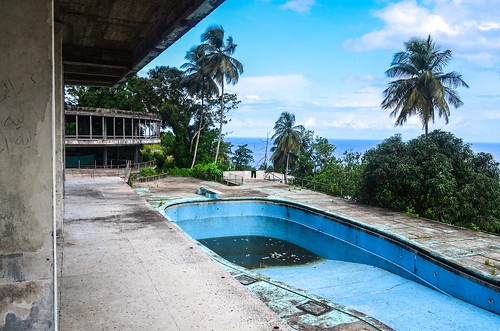
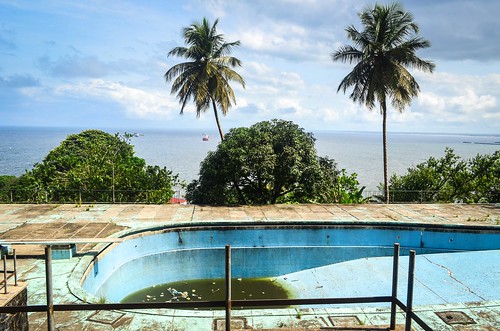
Quickly, the no-picture policy of the security guard turns into a guided tour with an all-you-can-snap authorization. He says that as long as I am not seen taking pictures, and against a small something “because this is Africa, you know how it works right?“, there is no problem. He even calls his nephew to escort me until the top of the ruined structure.

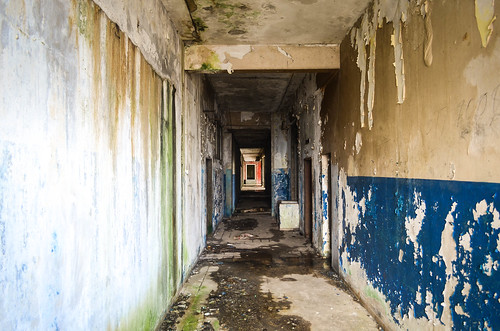
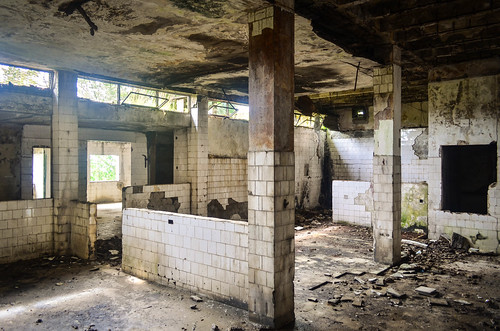
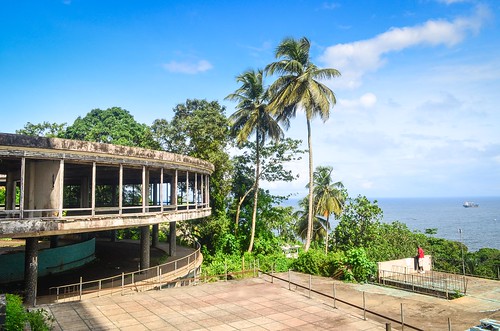

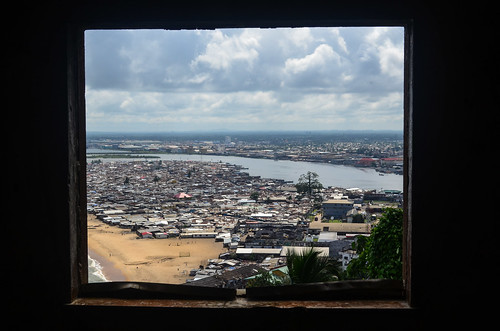
Some kids are playing in the empty pool while a woman does her laundry with the water collected inside the building, maybe from the reservoirs that formed at the bottom of the elevator shafts. The hotel rooms look very small but have perfect views, on West Point slums, on the fishermen coming back from the sea, on Monrovia city center, on the swamps in the north, on the freeport, etc.
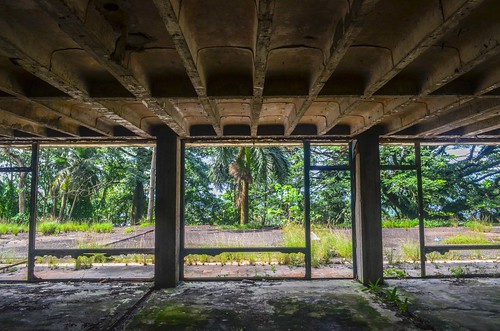
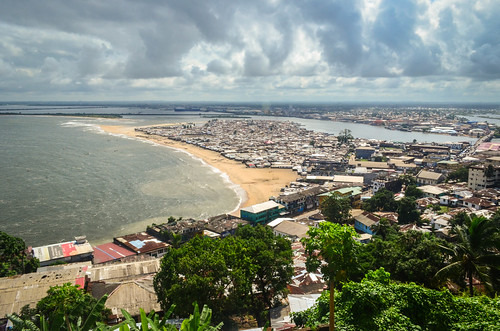
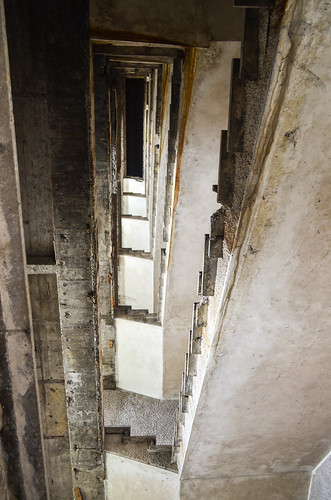
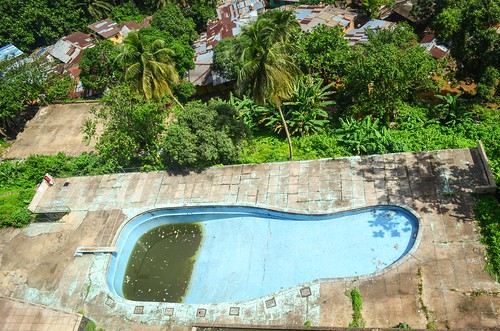

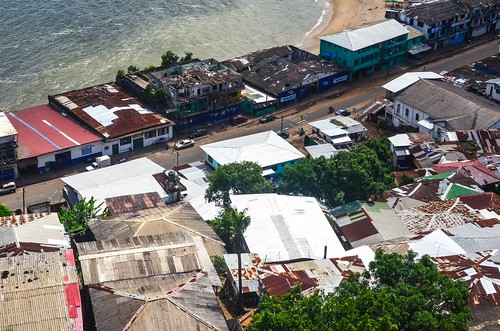
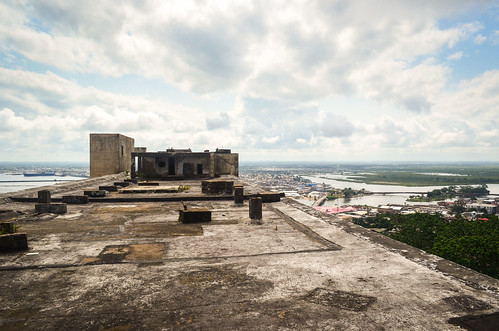
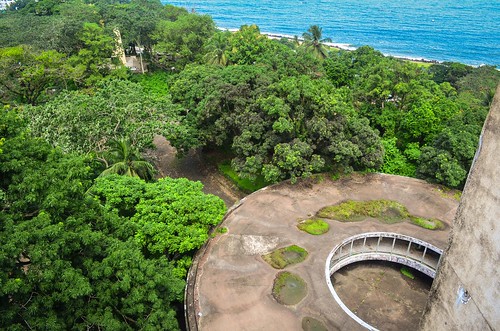
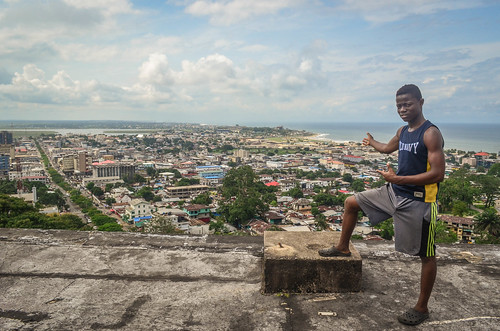
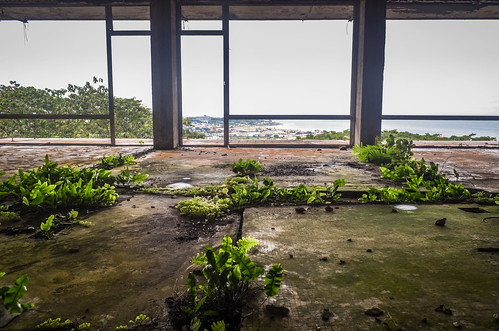
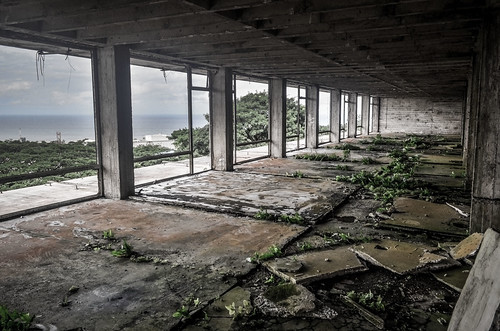
The hotel was closed in 1989, suffered from looting and was squatted until 2007. The nephew shows me drawings, some of which reminded me of the work of H.R. Giger, the creator of the Alien creature.
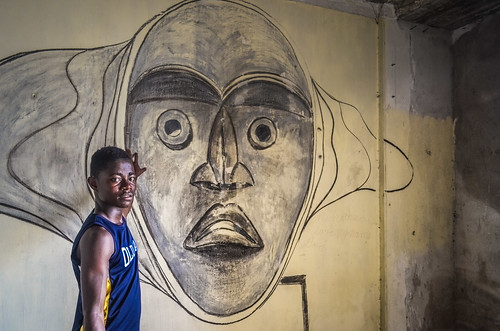
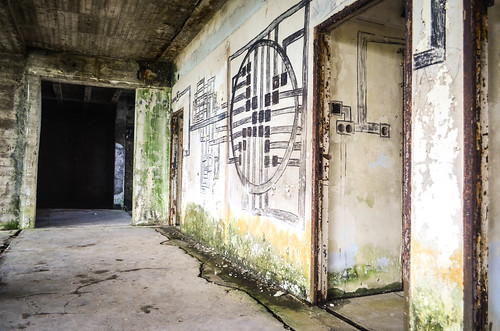
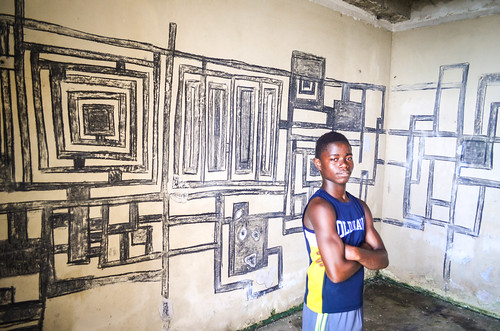
Further away from Monrovia’s center, beyond the Bushrod Island, lays another special five-star hotel, the Hotel Africa. It was built in 1979 for hosting (and probably impressing) the guests of the OAU summit of the same year. The OAU (Organization of African Unity) is the former version of the current African Union, which gathers all the African states at the exception of Morocco (who left it due to the issue with Western Sahara).
The visit of this ruined hotel was our backup plan in case we failed to ride the Bong mine train, which we almost succeeded. Liberia has (had) three train lines, all for mining purposes.

The railways were not used during the war. The Mano River one is no more than a mud track and metallic bridges, I guess everything else has been taken and sold for scrap. The Lamco railway from Buchanan is in use again, as ArcelorMittal took over the iron ore mines in Yekepa. And the German trains to the Bong mine are also running, since the Chinese are restarting the work at the Bong mine and refitting the railway. It is this last one that ends in the freeport of Monrovia on the Bushrod Island.
A train lover had written about riding the Bong mine train in 2007, and since I like both trains and mines, that was a good idea for a great adventure. There is no passenger service anymore so we tried our luck on a Saturday morning. We were allowed into the freeport and talked with everyone: both the Chinese supervising the work and the Liberians getting ready for the mine were friendly and talkative. Well, as widely pointed out by the Liberians, the Chinese don’t speak English. Only one of them could speak badly, and there have apparently translators on site. The Liberians regret the Germans who were there before, for that it is impossible to have even a basic discussion with the Chinese managers.
One of them also pointed that they are not only bringing new material, but also a thousand workers to the mine, for jobs that Liberians can do. In a way, I expected to hear a lot of criticism about the Chinese in Africa, but on the other hand, Europeans don’t seem to be flocking as quickly to Africa and make risky investments. After two hours waiting and chatting around the train, when we were about to depart with the same old German locomotive, a Chinese manager lady came at the last moment and kicked us out. So we walked away, disappointed, to the Hotel Africa.
Hotel Africa is on the coast near the mouth of the Saint Paul river. It is not far from where we camped before entering Monrovia.
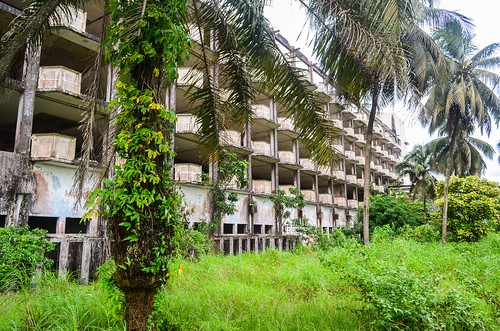
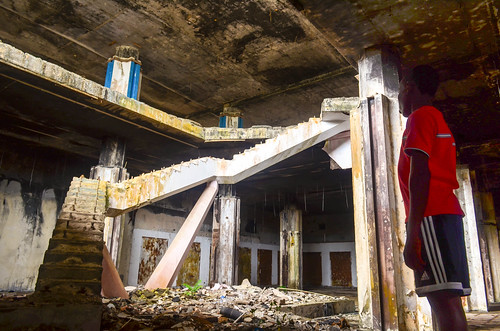
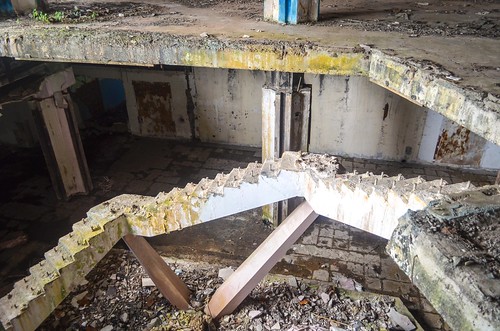
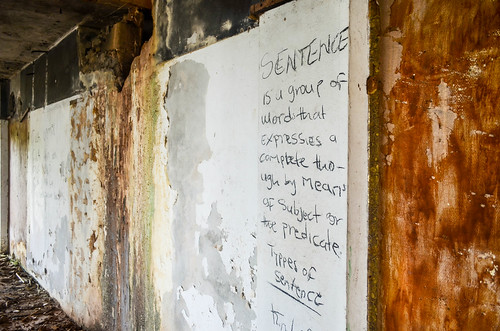

The surroundings of the hotel are occupied by the UN forces. There is a Pakistani camp.

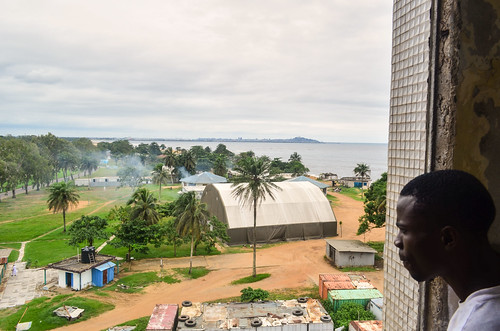
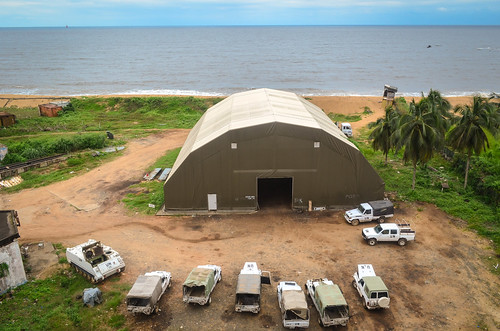
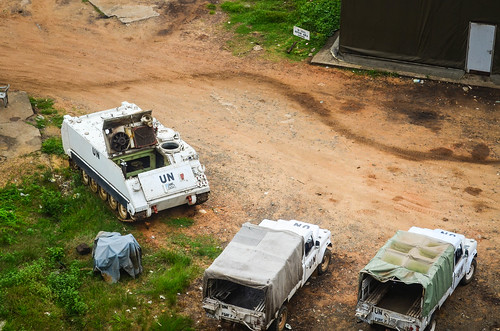

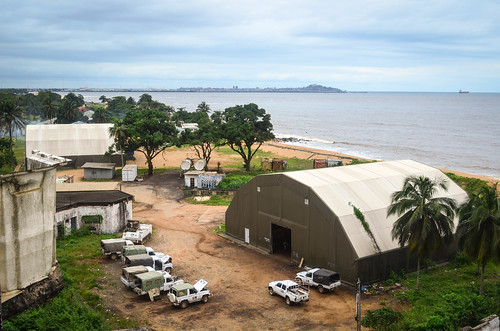
The pool was shaped in the shape of the African continent.
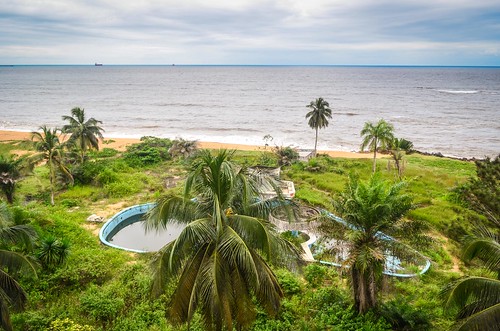
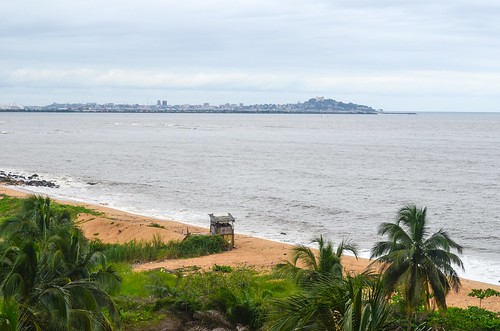
During the Liberian civil war, a rebel group kidnapped the manager of the hotel and threw him from the 4th floor balcony. Pictures dating of 2007 still show the elevator doors. Now, there is nothing left, not even a single bit of steel to steal.
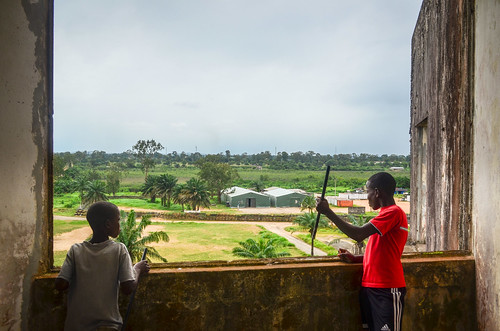

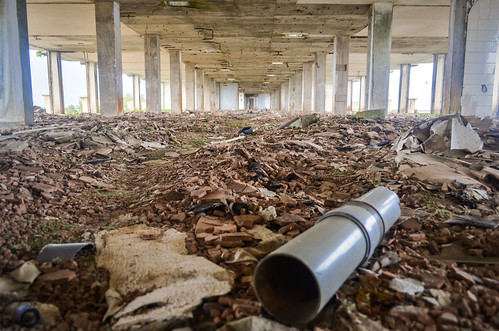


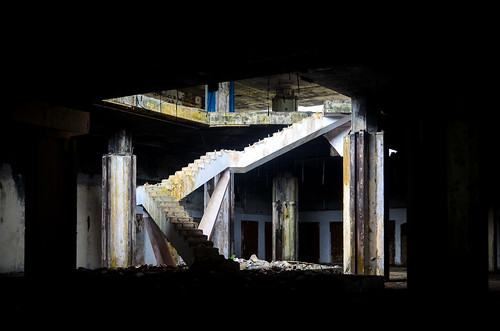
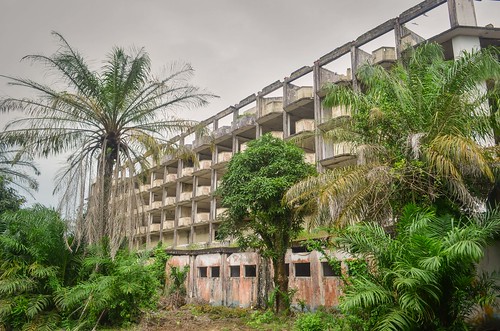
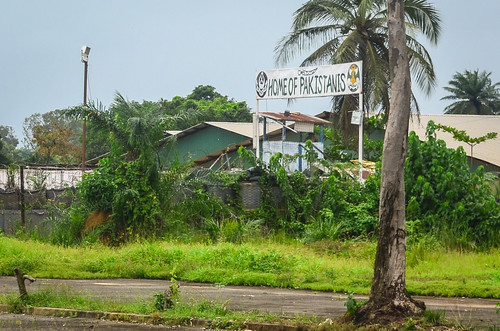
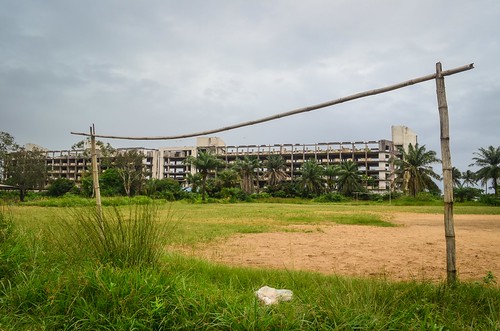
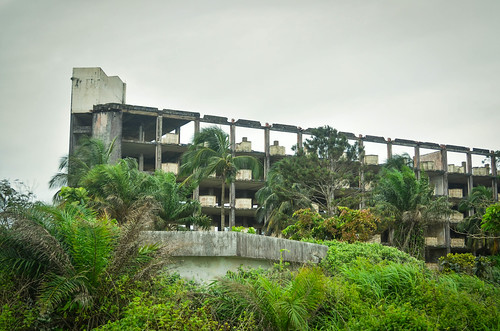
Just like for the Ducor hotel, Wikipedia says it was scheduled for renovation in 2009. Some comments on this page are written by former employees of the hotel.
To end this post of ruins on a more optimistic note, kids! More pictures of them in the Monrovia post.
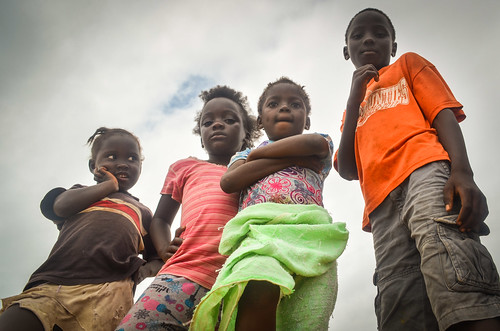
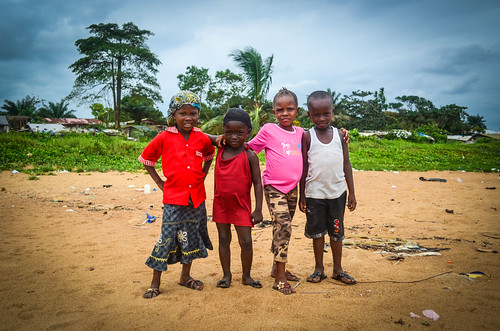






hello JB,
ton périple se poursuit, 13000 km déjà, il va certainement s’étendre au delà d’une année !! les photos des enfants Africains sont toujours aussi jolies .
prends soin de toi et bon courage pour la suite .
En effet, 1 an et encore de la route devant. Sauf que maintenant c’est plein sud!